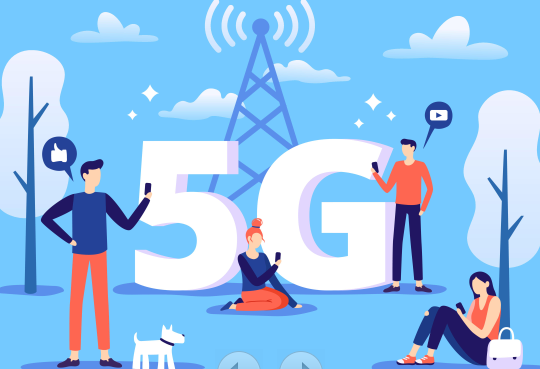Wireless power delivery could be key to 5G sustainable smart cities

Wireless power delivery could be key to 5G sustainable smart cities

The Internet of Things (IoT) is estimated to currently connect more than 10 billion devices and is expected to grow rapidly in the context of 5G, with Cisco predicting that more than 500 billion devices will be connected by 2030. One of the pillars of 5G coverage is its ability to increase the number of connected devices by orders of magnitude; for the first time we will have a network that can truly connect every device in the world.
This scalability could enable a wide range of new IoT applications, including massive ultra-high-speed networks that improve supply chains and speed up manufacturing processes. But IoT data driving sustainable smart city applications is the most anticipated as 5G coverage grows. When the 5G real-time data capability of the Internet of Things is applied to smart city applications, it can balance power loads, reduce costs, reduce unnecessary resource consumption, and improve security.
Now, 5G is solving the connectivity problem at scale, but there is one hurdle that is not getting enough attention that is holding back IoT deployments: power delivery. Today's typical wired and battery-powered methods cannot meet the challenge of powering hundreds of billions of devices; humans have not made that many batteries in 200 years, and we cannot possibly connect that many batteries. We need to rethink how we power sensors and devices to meet the challenges and realize the promise of 5G-enabled IoT. Fortunately, there's another option: wireless power delivery.
Wires and traditional batteries won't power the future
While it is true that 5G can expand the scale of the Internet of Things by hundreds of billions of new connected devices on a global scale, traditional power transmission mechanisms limit the deployment of IoT on 5G. Wireless power is the modern electrical infrastructure we need, and it can be deployed with 5G. Wireless power delivery is safe and reliable electricity that can be automatically transmitted to devices from great distances.
Smart cities will require metropolitan-scale networks to improve operational efficiency, communicate critical data to the public, and improve municipal services. For example, IoT sensors in devices can transmit information about air quality, temperature, resource consumption, general health and activity levels around cities, enabling rapid analysis to design and deploy improvements—but all of these sensors require power .
Secure wireless power already exists and could be deployed at scale to integrate wireless power with 5G into buildings and infrastructure. This will reduce wiring and maintenance costs while providing wireless power so that personal consumer smart home gadgets, cell phones, tablets, gaming devices and more within the building are also automatically charged.
Batteries, on the other hand, have a huge environmental cost: extracting the rare earth metals, manufacturing the batteries and eventually disposing of them wreaks havoc on our environment.
- Battery chemical mining has negatively impacted the health of ecosystems, populations and wildlife around the world.
- The energy cost of a battery is typically 5000 times the equivalent energy from a wall outlet. This includes costs from raw materials, manufacturing, transportation, etc.
- Battery disposal is becoming an environmental nightmare, as more and more devices are short-lived, which means batteries, even rechargeable ones, are being disposed of in large numbers across the globe.
Wireless Driving a Sustainable 5G Future
Sustainability is a core component of the smart city vision. 5G enables smart cities to leverage data and technology to improve efficiency, increase productivity and transform cities into centers of sustainable development. Wireless power accomplishes this by reducing the excess battery and electronics waste associated with traditional power supplies.
Independent research firm Sustaintalytics estimates the impact wireless power could have on the Internet of Things over the next five to ten years. The company looked at just three potential IoT sensor use cases, which account for less than 1% of the total number of sensors expected to be deployed in the next few years. Even with limited capacity, the positive environmental impact of switching to wireless power is expected to be significant:
- 41,000-83,000 kg of waste avoided.
- Eliminated 238,000-476,000 standard containers (40 feet) of battery waste.
- This equates to taking 66,000-132,000 cars off the road.
- 468-936 tonnes of lithium were avoided.
- Save 936M-1.87B liters of water (equivalent to 720 Olympic-sized pools).
- 306,500-613,000 emissions (tCO2e) avoided.
Again, these are the estimated impact of wireless power delivery on 1% of IoT devices. Extrapolating these numbers to wider wireless power deployments, wireless power's enormous potential to improve sustainability comes into focus.
Driving Technology Trends
In a smart city environment, wireless power infrastructure could reduce the waste associated with conventional electricity, while also enabling wider deployment of 5G network- connected sensors. These can drive smart mobility, parking and traffic management initiatives, while supporting innovation in other areas, including healthcare, education and public services.
This is just the beginning. 5G has sparked new technological trends across the board. When 5G is combined with wireless power, the two technologies can open the floodgates of creativity and unlock innovations across domains, including smart cars, smart homes, virtual reality and more.
5G is a game changer. Its scalability, speed, and data capacity have the potential to drive IoT innovation. People are excited about the possibilities, including the potential of smart cities. But before the promise of IoT can be fully realized, we need to overcome the limitations of traditional power sources for IoT. Wireless powering for 5G deployments could be key to realizing this sustainable vision.